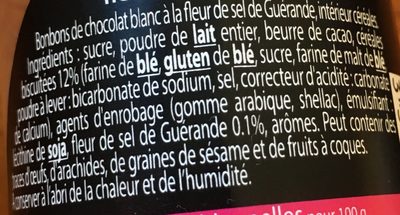Croustillants à la Fleur de Sel de Guérande Chocolat Blanc - Ty-Gwenn - 180 g
This product page is not complete. You can help to complete it by editing it and adding more data from the photos we have, or by taking more photos using the app for Android or iPhone/iPad. Thank you!
×
Barcode: 3389090020851 (EAN / EAN-13)
Quantity: 180 g
Brands: Ty-Gwenn
Categories: Snacks, Sweet snacks, Cocoa and its products, Confectioneries, Chocolate candies, Bonbons
Labels, certifications, awards:
Green Dot, fr:Produit en Alsace
Manufacturing or processing places: Conserverie des Saveurs, 2 ZA La Bossardière 44430 LE LANDREAU FRANCE, Pays de la Loire, Loire Atlantique
Link to the product page on the official site of the producer: http://www.tygwenn.bzh/produits/croustil...
Countries where sold: France
Matching with your preferences
Environment
Packaging
Transportation
Report a problem
Data sources
Product added on by nouky20
Last edit of product page on by roboto-app.
Product page also edited by kiliweb, moon-rabbit, openfoodfacts-contributors, packbot, yuka.UnFjck1ad2E5LzQzdWNRSDRFckYxdjlIL0wrT1FqM25CZUE4SUE9PQ.










